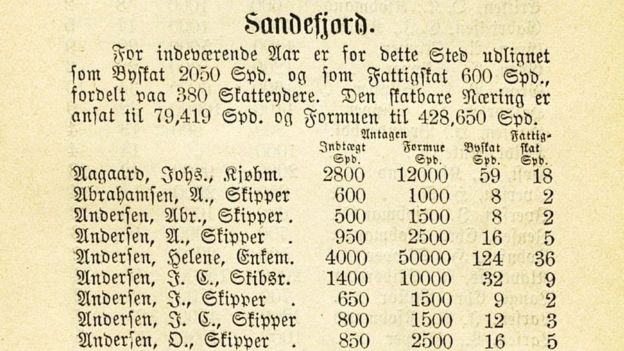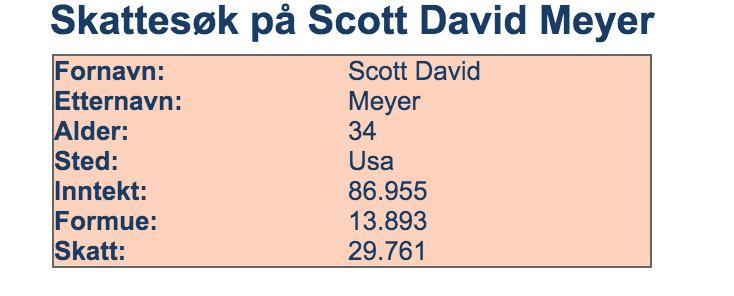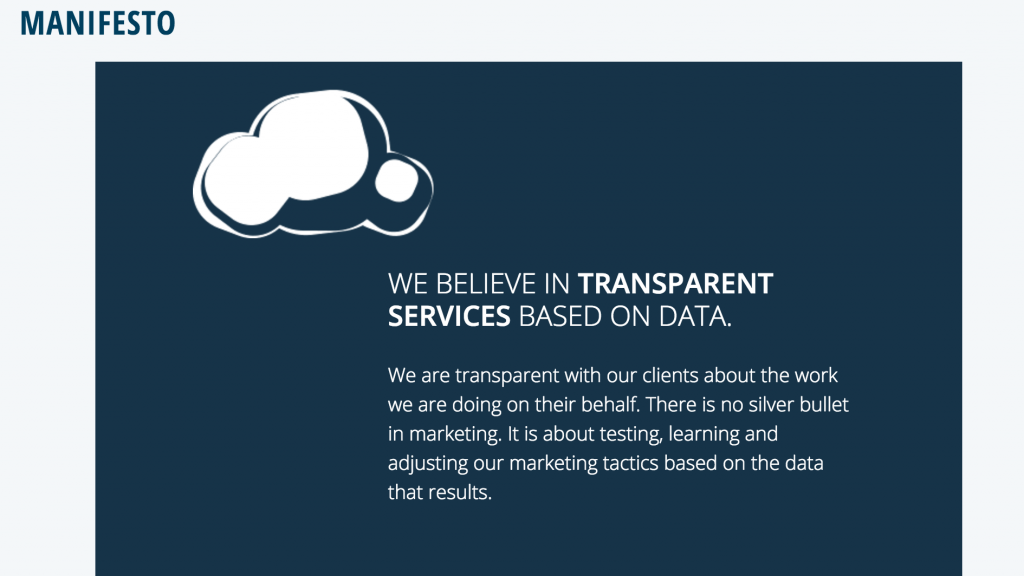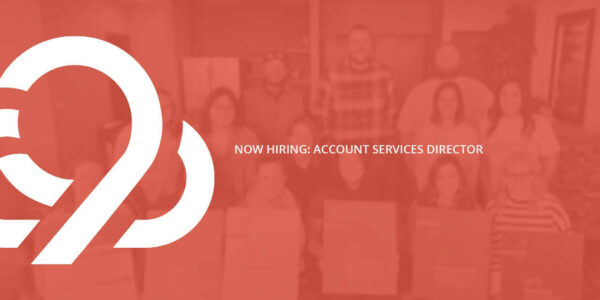
Here’s My Tax Return: See How Transparency Changes Your Business
Filing taxes is not entertaining in most parts of the world. In fact, those in the United States may be feeling stress and anxiety as the deadline for filing taxes arrives.
In my former home of Norway, however, tax day is the most entertaining day of the year.
Why? All Norwegian tax returns are public.
This is not public in the sense that you need to go to some office and make a request to see someone’s tax returns. This is public in that everyone’s taxes are published in the newspaper and can be easily accessed online.
This is public in that every county newspaper publishes the richest residents, the biggest gainers and losers, and — of course — tax returns for famous Norwegians. What’s more, this is one of the biggest days of newspaper sales of the year in Norway.
As a short-time resident of Norway, my information is all there too. Check out how I made a whole 86.900 NOK (about $10,500) in 2008.
While this level of transparency may frighten most people outside of Norway, it has been credited with radically transforming Norwegian society.
Could transparency do the same for your business?
How Public Taxes Change a Country
In 1814, Norway was an unwilling war prize. Long a colony of the Danish empire, it was taken from Denmark and given to Sweden as compensation for the Napoleonic Wars. At this moment of change, Norway fought for greater independence and created a central bank.
How did an aspiring country that was one of the poor outposts of Europe raise money for such an undertaking? Taxes, of course.

Extract from the booklet “Tax assessment 1871 for cities in Norway,” which shows a table for the city of Sandefjord. Image credit: BBC
Each citizen was asked to chip in. To make sure everyone paid their fair share, payments were publicly displayed and even shared by the town crier so that the illiterate would also know the taxes paid from their villages. Every year, these taxes were documented, and the tradition has been carried through Norway’s independence in 1907 all the way to today.
Here are the 2014 tax returns, for example. You can find important lists like the richest comedians in Norway (hint — it’s the guys who wrote “What Does the Fox Say?”).
This incredible transparency was always present in Norway and is now an important part of its culture.
The transparent tax system has been credited with transforming Norwegian society into one of the most economically equal and happiest countries on earth. Specifically, the pay gap between women and men is the best in the world (although still not equal). The open tax lists, or skattelister, might help in this area. If a female employee knows exactly what a male employee makes at a certain job, it is easier for her to ask for the same amount.
Similarly, Norwegian salaries for recent graduates are the second-highest in the world. Low unemployment and a small population are the biggest factors here, but again, public taxes help. Recent graduates in Norway are not desperately offering their skills to the first person who offers them a job. They know what they are worth based on the tax returns of people in similar jobs, so they ask to get paid accordingly.
Of course, this transparency has potential downsides as well. Some argue that the high taxes and high transparency of Norway discourages wealth creation. If someone doesn’t want to be identified as the wealthiest person in their community, they might move elsewhere to work — or not work as hard at their current job.
Thomas Eriksen, professor of anthropology at Oslo University, argues that the Norwegian cultural trait of not wanting to stand out or get above yourself “is the downside to all that openness.”
Transparency cuts both ways. It can be a tool to improve a business (or society), but it can also undermine the very business it is meant to improve.
How Transparency Built 9 Clouds
At 9 Clouds, we make transparent data a key tenant of our manifesto.
Our clients have full access to all the results of our work. They can login at any time to get the data — not from us, but from objective tools like Google Analytics or HubSpot that track our success.
This approach differs greatly from many vendors who build their own measurement tools to measure their own work or who only provide occasional data. This approach feels unreliable, as their clients are never quite sure they are getting the whole story.
Transparency at 9 Clouds is a big reason why we enjoy an amazing retention rate with our clients. It differentiates us from competitors and helps our clients know if the marketing they are paying for is actually working.
Transparency is an effective rock in the satchel of the “Davids” of the world.
How do you know if transparency is right for your business?
- Transparency is for you if you are a smaller company competing against large, established foes.
- Transparency is for you if your competitors frustrate some of their clients with opaque or impersonal reporting.
You do not need to publish the tax returns of your employees to be transparent for your clients (they probably don’t care). You just have to be more open than your competitors. Ideally, you want to be significantly more transparent than your competitors to draw attention and business.
While transparency can attract new clients, it also forces improved products and services. Just as Norway enjoys a smaller wage gap thanks to its tax system, sharing data from 9 Clouds’ work causes us to constantly iterate and improve if a marketing tactic is underperforming.
“Sunlight is said to be the best of disinfectants,” as Supreme Court Justice Louis Brandeis famously remarked. For 9 Clouds, that sunlight encourages us to share results and respond quickly to any efforts that need improvement.
For your business, transparency can force improvement.
In many high-quality restaurants, you can see the kitchen. This forces the chef to keep things clean and fresh and helps differentiate the restaurant from other eateries that may not cook from scratch. Even Domino’s is attempting to combat its image as a low-quality pizza chain with radical transparency by installing a live webcam that lets you watch them make your pizza.
What information can your business share that will simultaneously build trust with clients and force you to improve your product or services?
Not All Transparency Is Created Equal
Transparency has become a buzzword in the tech community as companies push the transparency envelope. Companies such as Buffer are lauded for following the example of Norway and posting the salary of all of their employees based on a pay scale formula.
Many companies have tried to replicate this transparent model with ugly consequences. The podcast Planet Money, for example, shared the story of Pimlico Plumbers in England, which decided to make salaries public. When they began posting wages of all their employees, there was unrest and jealousy. Some employees left; others were upset because they thought they were underpaid or were being targeted because they were paid more than others.
Transparency causes problems when it suddenly undermines long-held expectations. In the Pimlico example, employees had shared an understanding that salaries were a private matter for years. When that changed, perhaps without their input, some felt their trust had been betrayed. Norway has the advantage of a history of sharing tax returns, so there was no change of expectations.
At 9 Clouds, we have always shared our data openly with clients. Had we previously kept those results internally and then one day told our employees that all our data must be shared, there could have been backlash. Our employees may have thought that we didn’t trust them or that we didn’t think they were doing a good job.
Changes in expectations in the name of transparency must be handled with care. When transparency is offered, the genie is out of the bottle, and it is difficult to go back to the way things were (for better or worse).
Transparency as a Tool for Growth
We have seen in the past week the power of transparency. Heads of state named in the Panama Papers have been forced to resign, while others are under increased pressure from citizens, stockholders, and regulators. Most would argue that this transparency is a good thing.

Image credit: The New Yorker
We have also seen expectations of openness consistently increase for public officials and celebrities to the point that their private lives are on public display. Many would argue that this transparency has gone too far.
Your business doesn’t have to be Norway and share everything you do. In fact, clients may not care about most of the details of what you do or know.
Find the areas of your business where transparency will help differentiate you, spur improvement, and build trust with your clients. Involve your staff in making the decision to open up your data, processes, and products. Then, proudly share what you do.
Your openness may attract as much attention as tax day in Norway.
Did you enjoy this article? Every weekend, we send one article with a big idea on business and community. Subscribe to make sure you receive them.

You can also find articles from 9 Clouds on Medium. Follow us




![Human vs AI A/B Test [Spoiler Alert: Humans Win!]](https://9clouds.com/wp-content/uploads/2024/02/Volvo-dealership-1-600x388.png)


